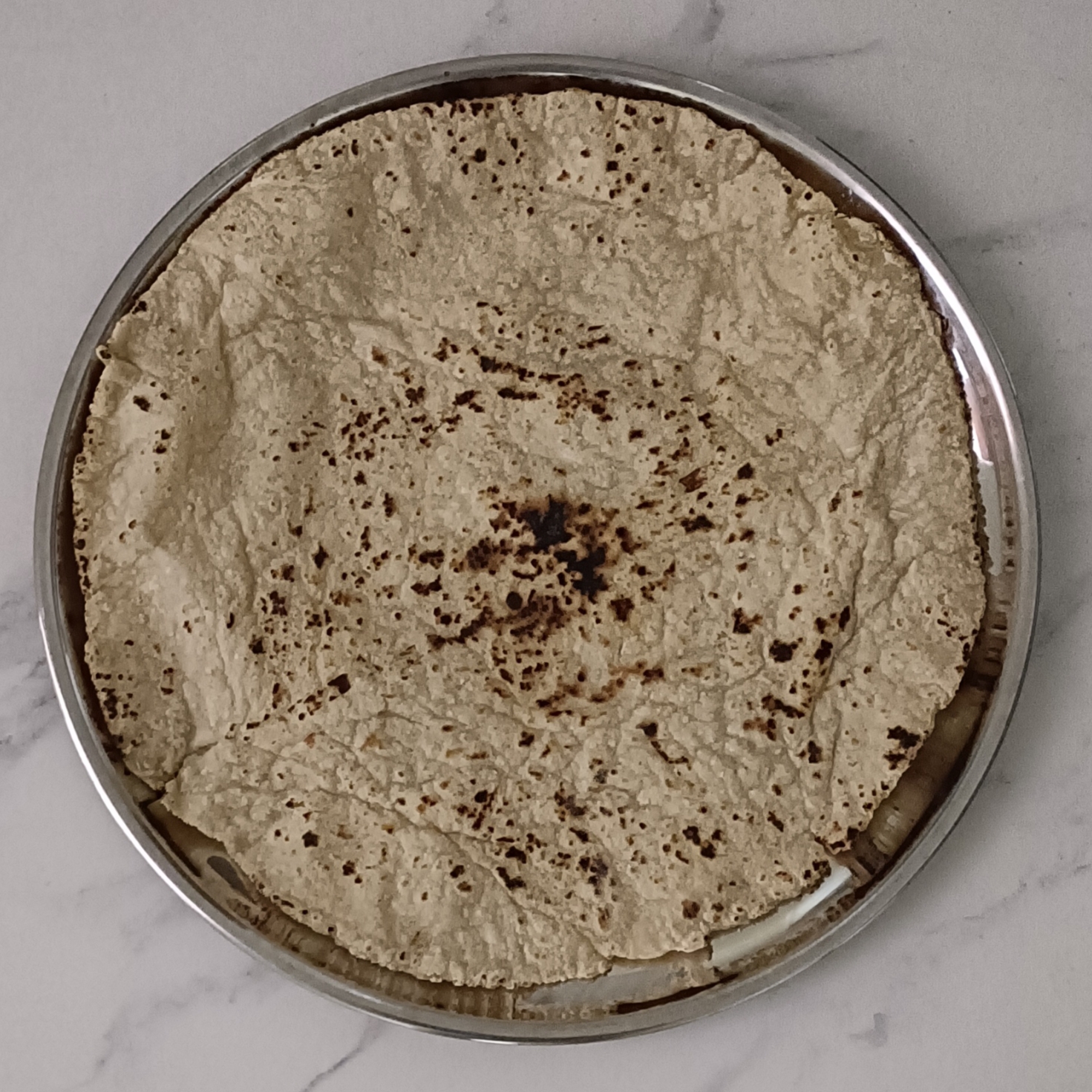Recipe: Darshana Muzumdar
Makes 4 round 9-inch bhakris.
Usually jowar bhakri is made using room-temperature water, kneading it well into a soft dough and making flat rounds by patting it firmly with the palm of one’s hand. However, using hot water makes the bhakris easy to roll with a rolling pin and makes them really soft. Try it to feel the difference.
Ingredients
- 2 cups jowar flour
- 1½ cup water
Method
- Bring one and a half cups of water to a boil in a small steel pot.
- Turn off the heat and add the jowar flour into it.
- Mix it well with a spoon till all the flour is damp.
- Cover and let it rest for10 to 15 minutes or until it is cool enough to handle with your bare hands.
- Transfer the dough on to a large plate or dough kneading pan (called paraat in Marathi).
- Knead the dough well till it is well blended and forms a ball.
- Divide the dough into 4 portions and cover with a damp cloth.
- Roll one of the balls in dry jowar flour and then roll it out into a thin flat round about 9 inches in diameter.
- Transfer this bottom side up on to a hot iron frying pan on medium heat.
- Immediately spread water on the top exposed layer making sure it is just enough to make it wet. Do this by taking about three four tablespoons of water in the cup of your hand and pouring it on the surface. Spread this water very fast with your fingers before the surface becomes hot.
- Let it roast for a minute or two till the bottom surface is slightly cooked and the water on the top has all dried out. Do not cook it too much.
- Flip the bhakri and turn the heat to high. Let it cook till it is golden brown.
- Flip it over again and let it cook. It will begin to puff up. Move it around to make sure all of the bhakri gets roasted.
- Place it on a plate or in a wicker basket lined with a cloth napkin.
- Take the second ball of dough immediately after you have spread water on the first and knead it once again for a short time till it is soft and pliant. Dip your fingers in water if you feel the dough is not soft enough. Repeat the procedure of rolling and roasting. Remember to turn down the heat to medium before you place the second bhakri in the frying pan or tawa.
- Cover the bhakris with the edges of the napkin once all of them are roasted and ready to be served.
- Serve bhakri with zhunka or other vegetables like shepuchi bhaji and curries.
For the Whole-Food Plant-Based (WFPB) version:
This is a salt-free whole plant based bread. Enjoy!
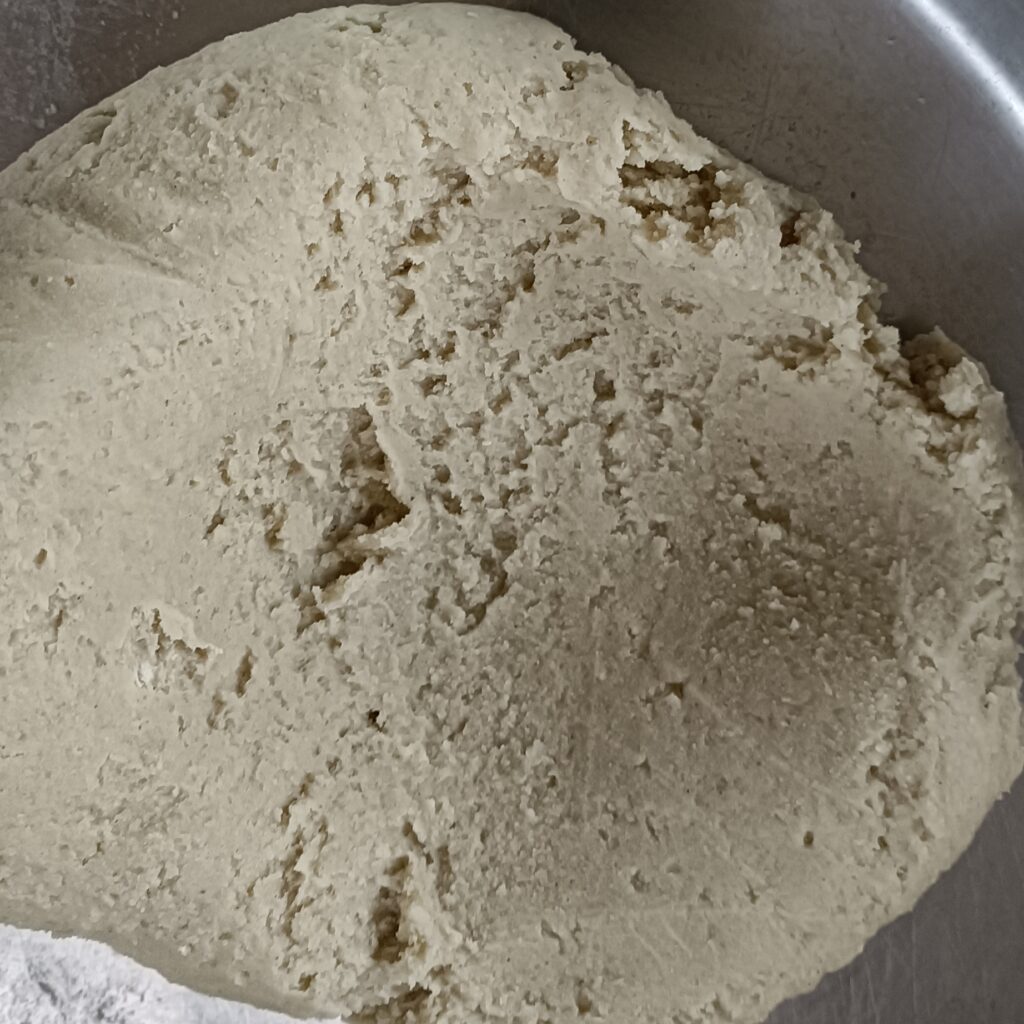
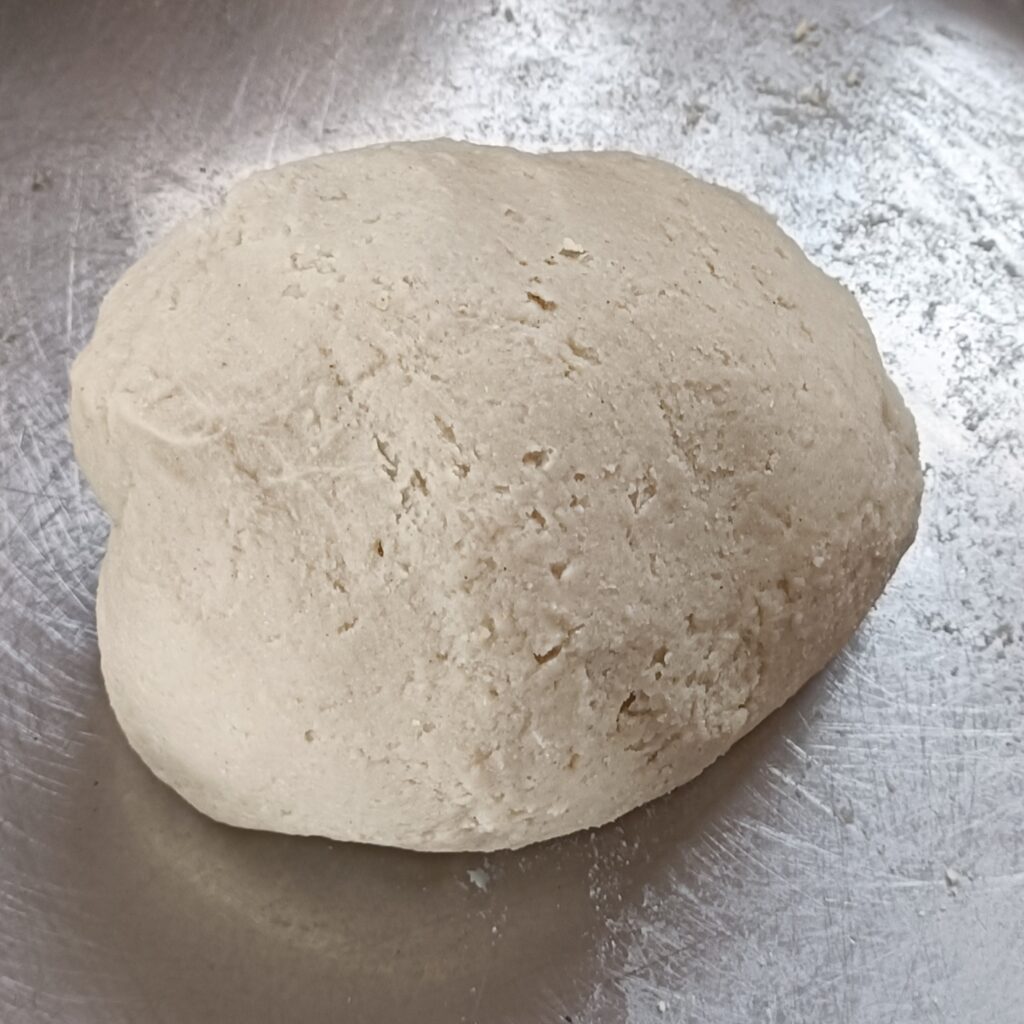
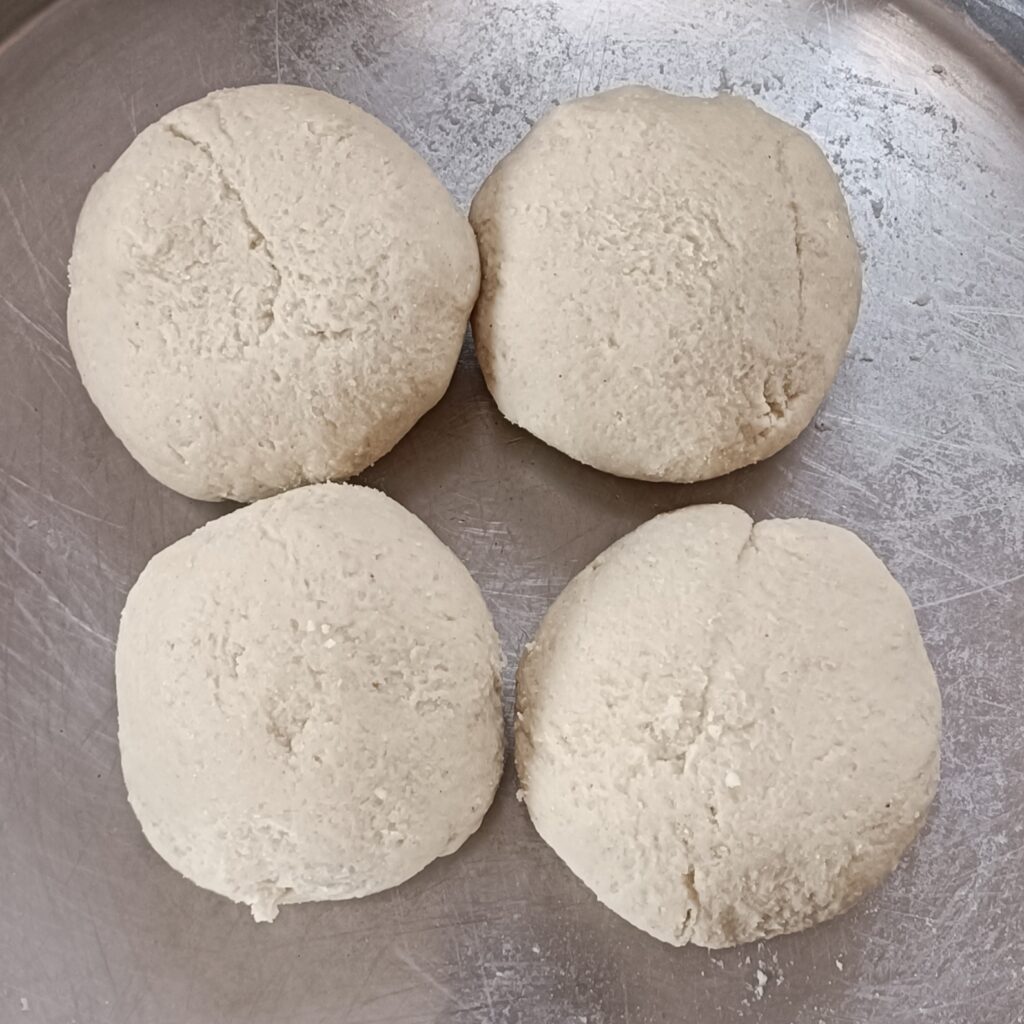



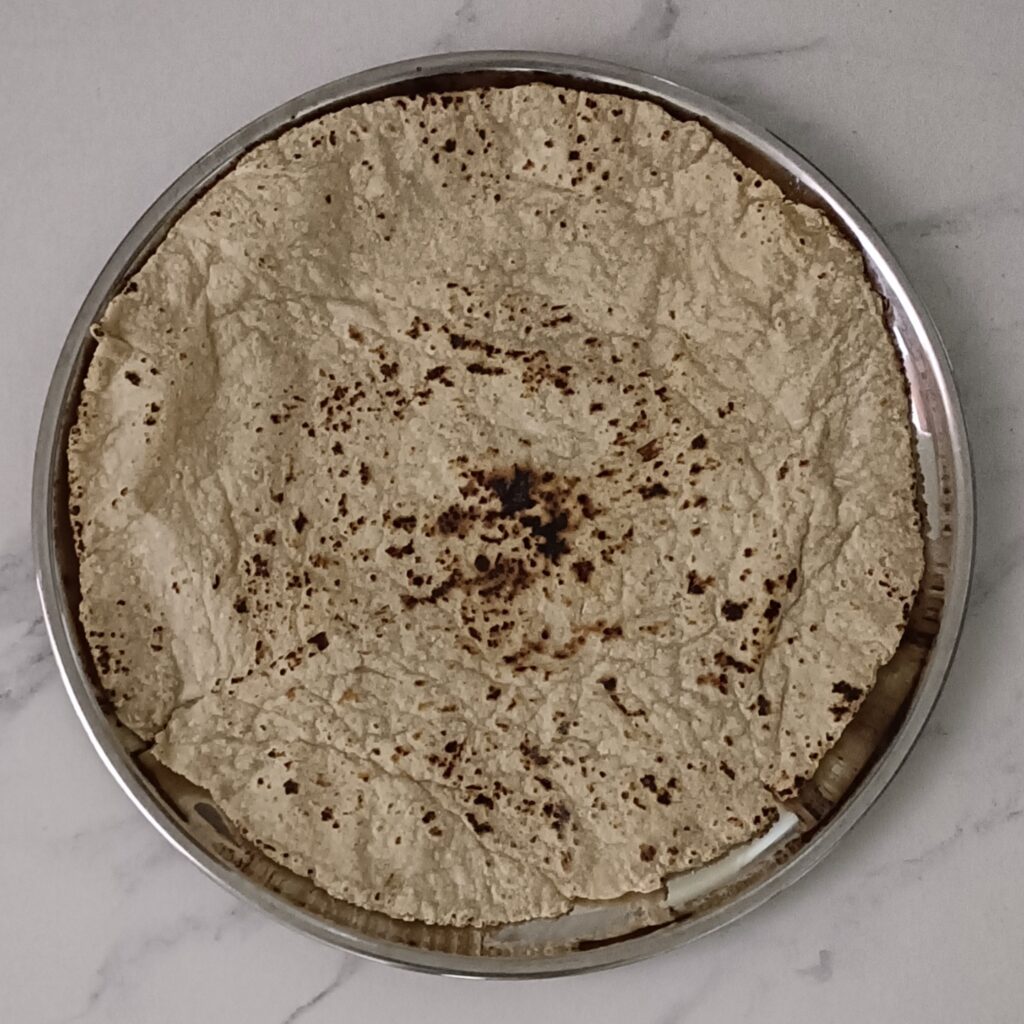
Share this:
- Click to share on Facebook (Opens in new window)
- Click to share on WhatsApp (Opens in new window)
- Click to share on Twitter (Opens in new window)
- Click to share on Pinterest (Opens in new window)
- Click to share on LinkedIn (Opens in new window)
- Click to share on Reddit (Opens in new window)
- Click to share on Tumblr (Opens in new window)
- Click to share on Pocket (Opens in new window)
- Click to share on Telegram (Opens in new window)
- Click to print (Opens in new window)

